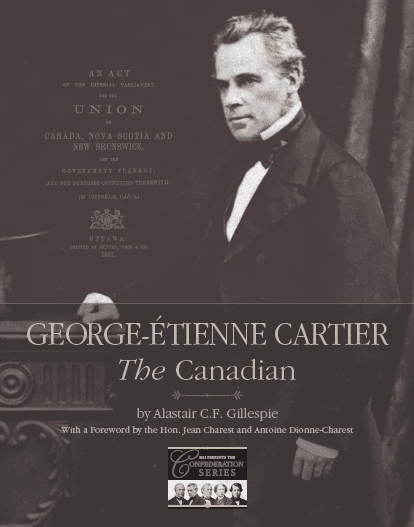- Home
- About
- Experts
- Issues
- Projects
- CNAPS (Center for North American Prosperity and Security)
- The Promised Land
- Voices that Inspire: The Macdonald-Laurier Vancouver Speaker Series
- Dragon at the door
- Canada on top of the world
- Letter to a minister
- Justice Report Card
- The Great Energy Crisis
- DisInfoWatch.org
- Managing Indigenous Prosperity
- Judicial Foundations
- Landmark Cases Council
- Defending The Marketplace of Ideas
- Reforming the University
- Past Projects
- Digital Policy & Connectivity
- Double Trouble
- Canada and the Indo-Pacific Initiative
- The Transatlantic Program
- COVID Misery Index
- Speak for Ourselves
- The Eavesdropping Dragon: Huawei
- Talkin’ in the Free World with Mariam Memarsadeghi
- An Intellectual Property Strategy for Canada
- Munk Senior Fellows
- A Mandate for Canada
- Confederation Series
- Fiscal Reform
- The Canadian Century project
- Fixing Canadian health care
- Internal trade
- From a mandate for change
- Size of government in Canada
- Straight Talk
- Labour Market Report
- Leading Economic Indicator
- Centre for Advancing Canada’s Interests Abroad
- Indigenous Prosperity at a Crossroads
- Events
- Latest News
- Libraries
- Donate
- Home
- About
- Experts
- Issues
- Projects
- CNAPS (Center for North American Prosperity and Security)
- The Promised Land
- Voices that Inspire: The Macdonald-Laurier Vancouver Speaker Series
- Dragon at the door
- Canada on top of the world
- Letter to a minister
- Justice Report Card
- The Great Energy Crisis
- DisInfoWatch.org
- Managing Indigenous Prosperity
- Judicial Foundations
- Landmark Cases Council
- Defending The Marketplace of Ideas
- Reforming the University
- Past Projects
- Digital Policy & Connectivity
- Double Trouble
- Canada and the Indo-Pacific Initiative
- The Transatlantic Program
- COVID Misery Index
- Speak for Ourselves
- The Eavesdropping Dragon: Huawei
- Talkin’ in the Free World with Mariam Memarsadeghi
- An Intellectual Property Strategy for Canada
- Munk Senior Fellows
- A Mandate for Canada
- Confederation Series
- Fiscal Reform
- The Canadian Century project
- Fixing Canadian health care
- Internal trade
- From a mandate for change
- Size of government in Canada
- Straight Talk
- Labour Market Report
- Leading Economic Indicator
- Centre for Advancing Canada’s Interests Abroad
- Indigenous Prosperity at a Crossroads
- Events
- Latest News
- Libraries
- Donate
The MLI Confederation Project:

George-Étienne Cartier, The Canadian
Born 6 September 1814 in Saint-Antoine-sur-Richelieu, Quebec; died 20 May 1873 in London, England.
George-Étienne Cartier’s early years passed as a self-described “rebel,” when he joined the Patriote cause in the Rebellion of 1837, including fighting at the Battle of St-Denis against British troops under command of Colonel Gore. He went into hiding in the United States and only returned to Montreal in 1838, following his successful petition that the treason charge against him be dropped.
As a supporter of Sir Louis-Hippolyte Lafontaine, Cartier’s early years in the Legislative Assembly saw the confirmation of responsible government in Canada, with the executive accountable to representatives of the people. Appointed to Cabinet in the mid-1850s, Cartier soon joined with Upper Canada Conservative leader John A. Macdonald in serving as co-premier in two successive governments from 1857-1862, the beginning of partnership that would last until Cartier’s death in 1873. Cartier was often one of the most powerful politicians in the Union legislature, commanding a united band of French-Canadian followers.
Taking the lead role in the Cartier-Macdonald government in 1858, Cartier significantly endorsed as government policy federation of all the British North American provinces. A determined opponent of representation by population proposed by George Brown, which posed a threat to Lower Canada’s language, laws and institutions, Cartier’s change in policy signalled openness to constitutional change provided a new provincial government was secured for Lower Canada, ringed round with a federal division of powers.
The Great Coalition of 1864 represented the union of Canada’s two great sectional opponents – Brown’s Reform supporters in Upper Canada joined with Cartier’s majority in Lower Canada. Other than sheer force of numbers, Cartier’s great contribution to Confederation was to articulate an ideal that could unite Canadians across this sectional divide. Cartier’s famous speech in the Confederation Debates of 1865 articulated a new idea of Canadian political nationality – one capable of bridging the ethnic, religious and linguistic divides among our fractured population: “When we were united together … we would form a political nationality with which neither the national origin, nor the religion of any individual, would interfere.”
Later in life declaring pride that he “never appealed to prejudice,” Cartier spoke in the Confederation Debates of a Canada where diversity would be its strength. “We should have Catholic and Protestant, English, French, Irish and Scotch, and each by his efforts and his success would increase the prosperity and glory of the new Confederacy…we were of different races, not for the purpose of warring against each other, but in order to compete and emulate for the general welfare.”
For more on Cartier refer to the Dictionary of Canadian Biography.
The Macdonald-Laurier Institute is pleased to showcase the second paper of its Confederation Series, authored by MLI Munk Senior Fellow Alastair Gillespie.
This paper offers an important look at George-Étienne Cartier’s role in the birth of Confederation. With an introduction by Jean Charest and Antoine Dionne-Charest, the paper explores Cartier’s role in advocating a federal solution to the challenges facing the union between Upper and Lower Canada.
To read the full paper, titled “George-Étienne Cartier: The Canadian,” click here.
Speeches, Founding Documents
Newsletter Signup
|
|
Thank you for Signing Up |

Macdonald-Laurier Institute
323 Chapel Street, Suite #300
Ottawa, Ontario, K1N 7Z2 Canada
613.482.8327
Support Us
Support the Macdonald-Laurier Institute to help ensure that Canada is one of the best governed countries in the world. Click below to learn more or become a sponsor.
© 2023 Macdonald-Laurier Institute. All Rights reserved.
